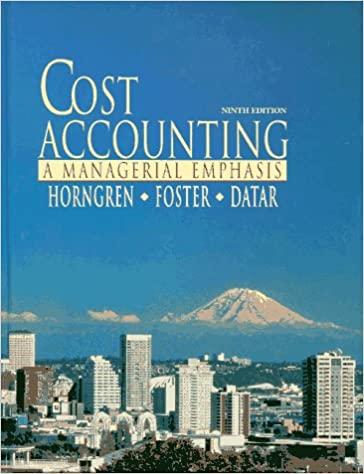Answered step by step
Verified Expert Solution
Question
1 Approved Answer
sales journal, purchases joirnal and cash recipets are NOT NEEDED. ( i already completed those 3 ) Church Company completes these transactions and events during
sales journal, purchases joirnal and cash recipets are NOT NEEDED. ( i already completed those 3 ) 



Church Company completes these transactions and events during March of the current year (terms for all its credit sales are 1/10,n/30 ). March 1 Purchased $33,000 of merchandise from Van Industries, terms 1/15,n/30. March 2 Sold merchandise on credit to Min Cho, Invoice Number 854 , for $13,200 (cost is $6,600 ). March 3 (a) Purchased $990 of office supplies on credit from Gabel Company, terms n/30. March 9 Purchased $16,500 of of ice equipment on credit from Speil Supply, terms n/30. March 12 Sold merchandise on credit to Jovita Albany, Invoice Number 856 , for $3,380 (cost is $1,650 ). March 13 (a) Sent Ran payment from Min Cho for the March 2 sale less the discount of $132. $330. March 13 (b) Received payment from Linda Witt for the March 3 sale less the discount of $66. March 14 Purchased $28,000 of merchandise fron the CD Company, terms 1/10,n/30. March 15 (a) Issued Check Number 417 for $14,400; payee is Payroli, in payment of sates sataries expense for the first half of the month. March 15 (b) Cash sales for the first haif of the month are $52,800 (cost is $42,240 ). These cash sales are recorded in the cash receipts journal on March 15. March 16 Purchased $1,510 of store supplies on credit from Gabel Company, terms n/30. March 17 Returned $2,800 of unsatisfactory merchandise purchased on March 14 to CD Company. Church March 19 Returned $495 of payable by that amount. March 23 Issued Check Number 418 to CD Company in payment of the March 14 purchase less the March 17 March 27 Sotd merchandise $252 discount. March 28 Sold merchandise on credit to Jovita Albany, Invoice Number 857, for $9,900 (cost is $3,960). March 31 (a) Issued Check Number 419 for $14,400. payee is Payroll, in paynent $3,960 (cost is $1,584 ). March 15 (a) Issued Check Number 417 for $14,400; payee is Payroll, in payment of sales salaries expense for the first half of the month. March 15 (b) Cash sales for the first haif of the month are $52,800 (cost is $42,240). These cash sales are recorded in the cash receipts journal on March 15. March 16 Purchased $1,510 of store supplies on credit from Gabel Company, terms n/30. March 17 Returned $2,890 of unsatisfactory merchandise purchased on March 14 to CD Company. Church reduces accounts payable by that amount. March 19 Returned $495 of office equipment purchased on March 9 to Spell Supply. Church reduces accounts payable by that amount. March 20 Received payment from Jovita Albany for the sale of March 10 less the discount of $33. March 23 Issued Check Number 418 to CD Company in payment of the March 14 purchase less the March 17 return and the $252 discount. March 27 Sold merchandise on credit to Jovita Albany, Invoice Number 857, for $9,990 (cost is $3,960 ). March 28 Sold merchandise on credit to Linda Witt, Invoice Number 858, for $3,960 (cost is $1,584 ). March 31 (a) Issued Check Number 419 for $14,406; payee is Payrotl, in payment of sates salaries expense for the last half of the month. March 31 (b) Cash sales for the last half of the month are $58,080 (cost is $34,848 ). These cash sates are recorded in the cash receipts journal on March 31. March 31 (c) Verify that amounts impacting customer and creditor accounts were posted and that any amounts that should have been posted as individual amounts to the general ledger accounts were posted. Foot and crossfoot the journals and make the month-end postings. Assume the following ledger account amounts: Inventory (March 1 beginning balance is $61,000 ), Z. Church, Capital (March 1 beginning balance is $61,000 ) and Church Company uses the perpetual inventory system. 2-a. Enter the transactions in a sales journal. 2-b. Enter the transactions in a purchases journal. 2-c. Enter the transactions in a cash receipts journal. 2-d. Enter the transactions in a cash payments journal. 2-e. Enter the transactions in a general journal. (a) Post information from the journals in Part 2 to the general ledger and the accounts recelvable and accounts payable subsidiary ledgers 



Step by Step Solution
There are 3 Steps involved in it
Step: 1

Get Instant Access to Expert-Tailored Solutions
See step-by-step solutions with expert insights and AI powered tools for academic success
Step: 2

Step: 3

Ace Your Homework with AI
Get the answers you need in no time with our AI-driven, step-by-step assistance
Get Started


